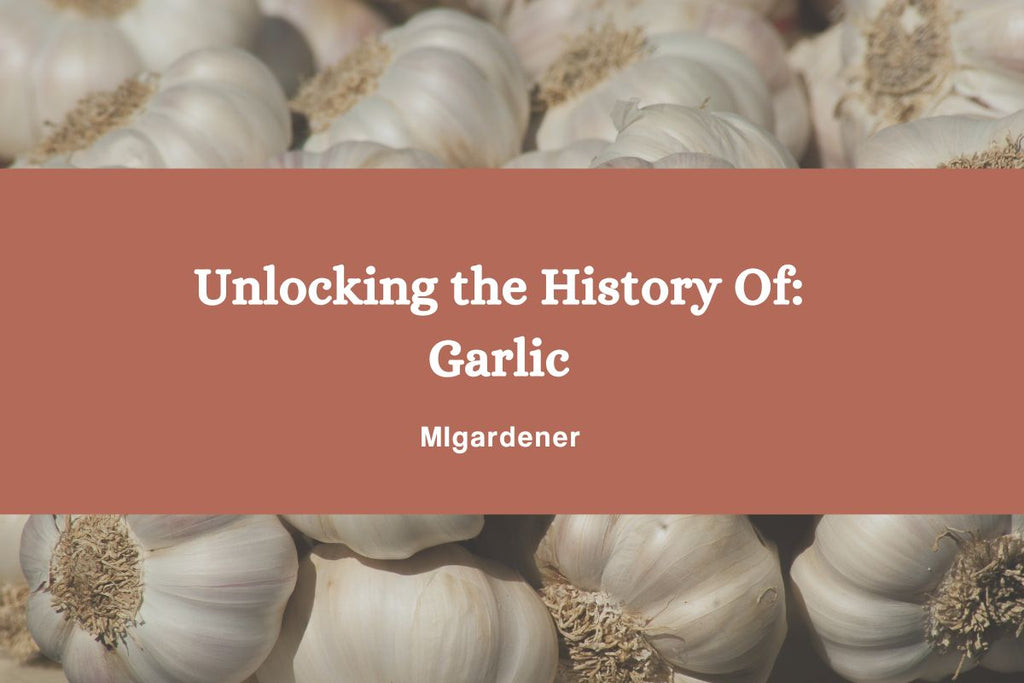
Unlocking The History Of: Garlic
Garlic, with its pungent aroma and distinctive flavor, has enchanted chefs and home cooks alike for centuries. This humble herb not only adds depth to dishes but also boasts a rich history and a remarkable array of varieties.
The Origins of Garlic
The story of garlic begins in Central Asia, where it is believed to have originated over 7,000 years ago. It then made its way to the Middle East, India, and eventually found a home in the Mediterranean region. Garlic's hardiness and adaptability made it a valuable crop for ancient civilizations.
Ancient Egypt: Garlic as a Source of Strength
One of the earliest known references to garlic comes from the ancient Egyptians. Not only was garlic a dietary staple, but it also held mystical significance. Garlic bulbs were even found in the tomb of King Tutankhamun, a testament to its importance in their culture.
Ancient Greece and Rome: Culinary and Medicinal Uses
The Greeks and Romans embraced garlic not only for its culinary merits but also for its medicinal properties. Hippocrates, the father of modern medicine, prescribed garlic to treat various ailments. Soldiers in ancient Rome consumed garlic for strength and courage before going into battle.
Medieval Europe: Garlic's Rise to Popularity
In medieval Europe, garlic gained popularity as a versatile culinary ingredient. It was used to flavor soups, stews, and bread. Garlic's association with lower classes led to its exclusion from aristocratic cuisine, but it continued to thrive in the commoners' kitchens.
Varieties of Garlic
The world of garlic is far more diverse than most realize. While there are hundreds of varieties, garlic can be categorized into two main types: softneck and hardneck garlic.
Softneck Garlic Varieties SubTypes
-
Silverskin Garlic: Known for its long storage life, Silverskin garlic is a favorite among home gardeners. It has a mild flavor and is often used for making garlic braids.
-
Artichoke Garlic: This variety is popular in the United States. It produces large, easy-to-peel cloves and has a mild to moderate flavor.
-
Creole Garlic: Hailing from the southern United States, Creole garlic offers a spicy, robust flavor. It's an excellent choice for those who enjoy a bold garlic taste.
Hardneck Garlic Varieties: SubTypes
-
Rocambole Garlic: Renowned for its rich and complex flavor, Rocambole garlic is a favorite among chefs. Its cloves are wrapped in a single layer, making them easy to peel.
-
Porcelain Garlic: This variety is known for its large, easy-to-handle cloves and a strong, robust flavor. Porcelain garlic is prized by garlic enthusiasts for its heat and intensity.
-
Purple Stripe Garlic: As the name suggests, this garlic variety features beautiful purple stripes on its bulb wrappers. It has a spicy, full-bodied flavor that adds depth to dishes.
-
Elephant Garlic: Despite its name, elephant garlic is not a true garlic but a close relative. It produces enormous bulbs with a mild, garlic-like flavor. It's a popular choice for those who prefer a milder taste.
Hardneck Garlic Attributes
-
Stem and Scape: Hardneck garlic varieties produce a central woody stem, known as a "scape," that emerges from the center of the bulb. The scape can be edible and is often used in culinary applications.
-
Cloves: Hardneck garlic typically forms fewer but larger cloves, which are easy to handle and peel. These cloves are enclosed in a single layer, making them readily accessible.
-
Flavor: Hardneck garlic varieties are known for their robust and complex flavors. They often have a spicier, more intense taste compared to softneck varieties, making them favored by chefs for their culinary impact.
-
Storage: Hardneck garlic has a shorter storage life compared to softneck varieties, typically lasting around six to eight months.
-
Growth: It's better suited for regions with colder winters, as it requires a period of vernalization (cold exposure) to produce bulbs.
Softneck Garlic Attributes
-
Stem and Scape: Softneck garlic does not produce a central stem or scape, resulting in a more flexible neck. This makes it easier to braid the garlic bulbs together, which is a common practice for long-term storage.
-
Cloves: Softneck garlic varieties typically yield more, smaller cloves in multiple layers. While these cloves can be harder to peel, they are excellent for long-term storage.
-
Flavor: Softneck garlic varieties generally have a milder and sweeter flavor profile. They are a popular choice for dishes where you want a subtle garlic presence without overpowering the other flavors.
-
Storage: Softneck garlic has a longer storage life, often lasting up to a year or more if stored properly in a cool, dry place.
-
Growth: It is better suited for regions with milder winters, as it doesn't require as much vernalization as hardneck garlic to form bulbs.
Garlic's Global Influence
Garlic's journey through history has not been confined to one region; it has traveled the world and left its mark on countless cuisines. In Asia, garlic is a fundamental ingredient in dishes like stir-fries and curries. Mediterranean cuisines rely on garlic for the iconic flavors of pesto and tzatziki. In Latin America, garlic-infused sauces and marinades are essential components of their culinary traditions.
In Conclusion
From its humble beginnings in Central Asia to its global presence today, garlic has evolved into a culinary and cultural icon. Its diverse varieties offer a spectrum of flavors, allowing chefs and home cooks to experiment with this versatile herb. Whether you prefer the mildness of Silverskin or the boldness of Rocambole, garlic has a place in every kitchen, adding depth and complexity to dishes throughout history and into the future. So, the next time you savor that aromatic garlic-infused meal, remember the fascinating journey of this remarkable herb.
Thank you for writing this article. I really enjoy learning the history of plants.
Really enjoyed reading this article about garlic. It’s been a staple in our home for many years yet I still learned something new from reading this. Always something new to learn. Thanks Luke! 🙂
Leave a comment